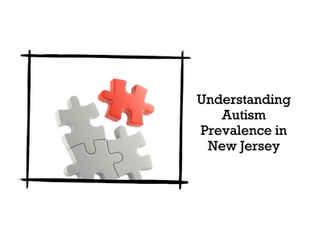Why ABA Therapy Can Help Your Child
Autism Spectrum Disorder (ASD) is a developmental disorder that affects communication, social interaction, and behavior. It is estimated that 1 in 54 children in the United States has ASD, and this number has been increasing in recent years. Fortunately, there are effective treatments available, and one of the most widely used is Applied Behavior Analysis (ABA) therapy. ABA therapy is a highly structured, evidence-based intervention that focuses on promoting positive behavioral outcomes for children with ASD. This article will explore the role of ABA therapy in helping children with ASD, the types of treatments it utilizes, and the research supporting its effectiveness.
What is ABA Therapy?
ABA therapy is a comprehensive approach to treating ASD that focuses on developing and improving behaviors such as communication, social interaction, self-care, academic skills, and problem-solving. The therapy involves breaking down complex behaviors into smaller, more manageable steps and teaching each step systematically. ABA therapy uses data collection and analysis to identify the antecedents and consequences of behaviors, which helps to create a treatment plan tailored to the individual’s needs. The therapy is provided in various settings, including home, school, and clinical settings, and the frequency and duration of therapy can vary depending on the individual’s needs.
The History of ABA Therapy
ABA therapy has been around since the 1960s when behaviorists began to apply the principles of operant conditioning to treat individuals with developmental disabilities. In the early days, ABA therapy was primarily used to treat children with severe behavioral problems, such as self-injurious behavior, aggression, and tantrums. Over time, ABA therapy has evolved to become a comprehensive approach to treating ASD, with a focus on promoting positive behavioral outcomes and improving the overall quality of life.
The Ethics of ABA Therapy
While ABA therapy has been shown to be effective in improving behavioral outcomes for children with ASD, there has been some controversy surrounding the ethics of the therapy. Some critics argue that ABA therapy is overly rigid and focused on compliance rather than individual needs and that it can be harmful to children with ASD. However, many experts in the field of autism research and treatment argue that ABA therapy can be delivered in an ethical and effective manner and that it is an important treatment option for children with ASD. Parents and caregivers need to do their research and choose a reputable ABA therapy provider that uses evidence-based practices and adheres to ethical guidelines.
Types of ABA Therapy
There are different types of ABA therapy, including:
-
Discrete Trial Teaching:
The therapy involves breaking down complex skills into smaller, more manageable steps, teaching each step systematically, and then combining the steps to form a complex behavior. Discrete trial teaching is particularly useful for teaching academic and self-care skills.
-
Naturalistic Teaching:
The therapy involves teaching skills in natural settings, such as during play or daily routines. Naturalistic teaching focuses on promoting social interactions, communication, and problem-solving skills. This approach is less structured than discrete trial teaching and is more focused on learning through natural interactions.
-
Early Start Denver Model:
An early intervention program for children with or at risk for autism spectrum disorder (ASD) between the ages of 12 and 48 months. It is based on the principles of applied behavior analysis (ABA) and uses a naturalistic developmental approach to promote positive developmental outcomes. The ESDM focuses on building social communication, play, and cognitive skills and involves parent involvement and coaching to promote generalization of skills to the child’s natural environment.
-
Pivotal Response Training:
The therapy focuses on teaching pivotal skills, such as motivation, self-management, and self-initiation, which can have a broad impact on other areas of development. Pivotal response training uses naturalistic teaching methods and is less structured than discrete trial teaching.
-
Verbal Behavior Therapy:
The therapy focuses on developing communication skills, including expressive language, receptive language, and social language. Verbal behavior therapy is based on the principles of operant conditioning and uses positive reinforcement to teach new communication skills.
Each type of ABA therapy has its strengths and can be tailored to the individual’s needs. ABA therapy providers often use a combination of these approaches to create a comprehensive treatment plan.
The Effectiveness of ABA Therapy
There is a significant body of research supporting the effectiveness of ABA therapy in promoting positive behavioral outcomes for children with ASD. According to a systematic review of ABA therapy conducted by the National Autism Center, ABA therapy has the strongest research support of any intervention for children with ASD (National Autism Center, 2015). The review found that ABA therapy is effective in improving communication, social skills, and adaptive behavior and that the effects of the therapy can be maintained over time.
Numerous studies have also found that early intensive ABA therapy can lead to significant improvements in behavior and communication skills for children with ASD. For example, a study published in the journal Pediatrics found that children who received 40 hours of ABA therapy per week for 2 years showed significant improvements in language and adaptive behavior compared to children who received less intensive therapy (Howard et al., 2005). Another meta-analysis of early intensive behavioral intervention for children with autism found that ABA therapy produced significant improvements in IQ, language, adaptive behavior, and social skills (Eldevik et al., 2009).
Overall, the evidence suggests that ABA therapy is a highly effective intervention for children with ASD, particularly when delivered intensively and early in the child’s development.
Conclusion
ABA therapy is a comprehensive, evidence-based approach to treating ASD that focuses on promoting positive behavioral outcomes and improving the overall quality of life. While there has been some controversy surrounding the ethics of ABA therapy, many experts in the field of autism research and treatment argue that it can be delivered in an ethical and effective manner. ABA therapy has been shown to be effective in improving communication, social skills, and adaptive behavior for children with ASD, particularly when provided early and intensively. Parents and caregivers need to do their research and choose a reputable ABA therapy provider that uses evidence-based practices and adheres to ethical guidelines.




